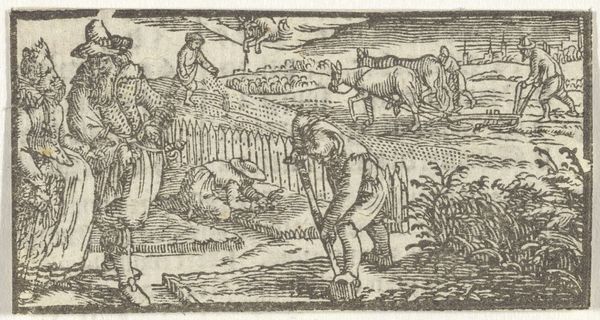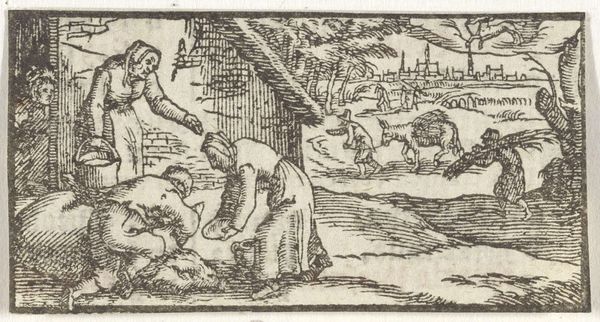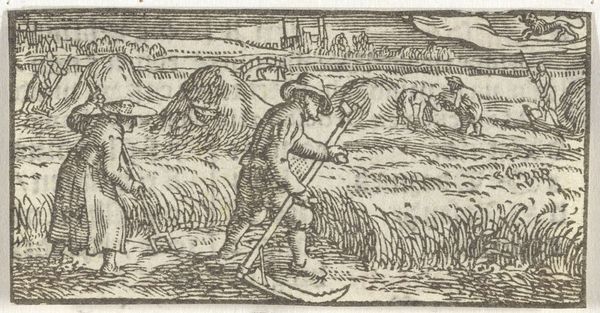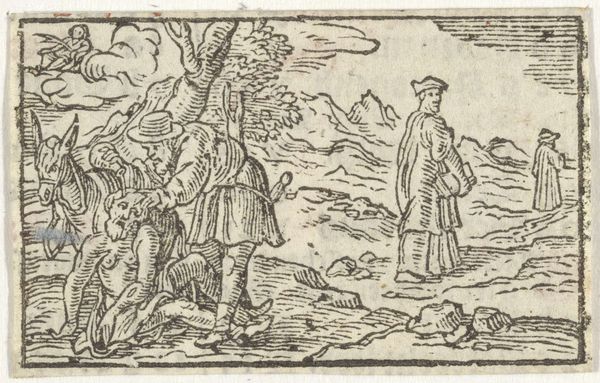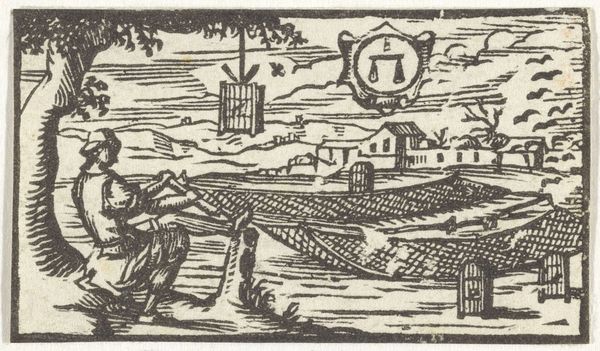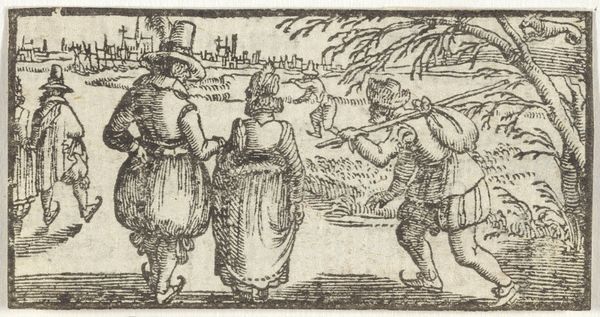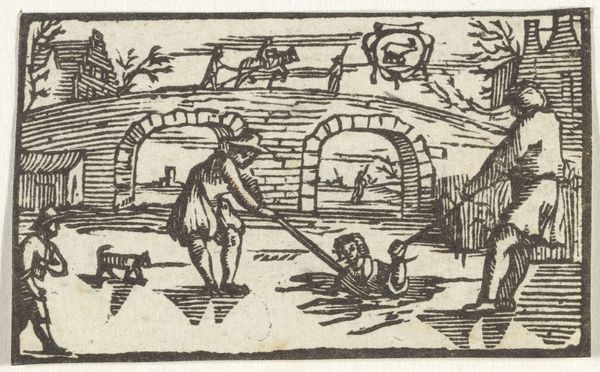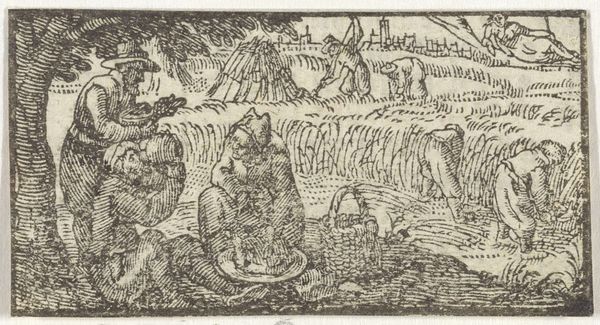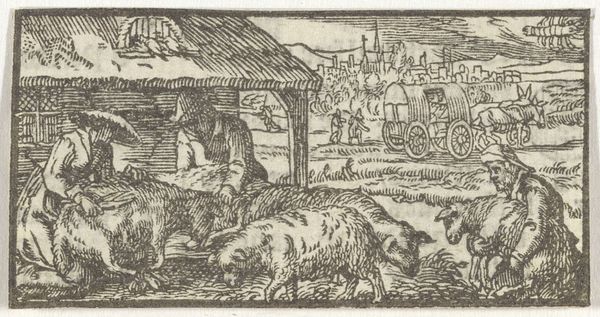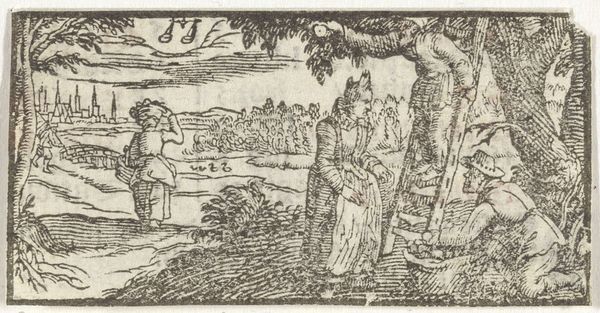
print, woodcut
# print
#
landscape
#
figuration
#
woodcut
#
genre-painting
#
northern-renaissance
Dimensions: height 28 mm, width 55 mm
Copyright: Rijks Museum: Open Domain
Editor: Here we have a 17th-century woodcut print entitled "Maart," artist unknown, offering a detailed, almost stark depiction of labor. The figures working really give me a sense of the demands of rural life. What story do you see unfolding within this scene? Curator: Well, placing "Maart" within its historical context, we find these depictions of seasonal labor often served a dual purpose. Yes, they represented the realities of peasant life, but also reinforced the social order. Consider how these prints, though seemingly simple genre scenes, circulated amongst different social classes. What values were they intended to instill, and in whom? Editor: That's interesting... so the print is less a neutral depiction of labor, and more an assertion of it, for potentially political reasons? Curator: Precisely. These prints were frequently commissioned by the wealthy to affirm a divinely ordained social hierarchy. Peasants are dutifully laboring, and, in some ways, fulfilling their role in society. Do you notice how this contrasts with imagery aimed at a peasant audience? Editor: I do see it differently now that you mention it, knowing about the commissioning factor. It makes me look more closely at their postures and where they're working... I wonder, did the artist have any say in the scene itself, or were they generally following a brief from the person who paid for the work? Curator: Artists occupied a complex space, somewhere between artisan and visionary. The extent of their creative agency would depend on various factors: their reputation, the patron’s level of sophistication, and evolving artistic norms of the time. What would you say this particular woodcut adds to the understanding of the socio-political dynamic, regardless of its creation history? Editor: It highlights the constant need for manual labour but in a manner that seems strangely idyllic when it isn’t, or wouldn’t have been, for the ones involved. I didn’t see this duality at first. Thanks for your perspective. Curator: My pleasure. It’s crucial to recognize how seemingly benign images participate in complex socio-political dialogues, making these historical works endlessly fascinating.
Comments
No comments
Be the first to comment and join the conversation on the ultimate creative platform.
